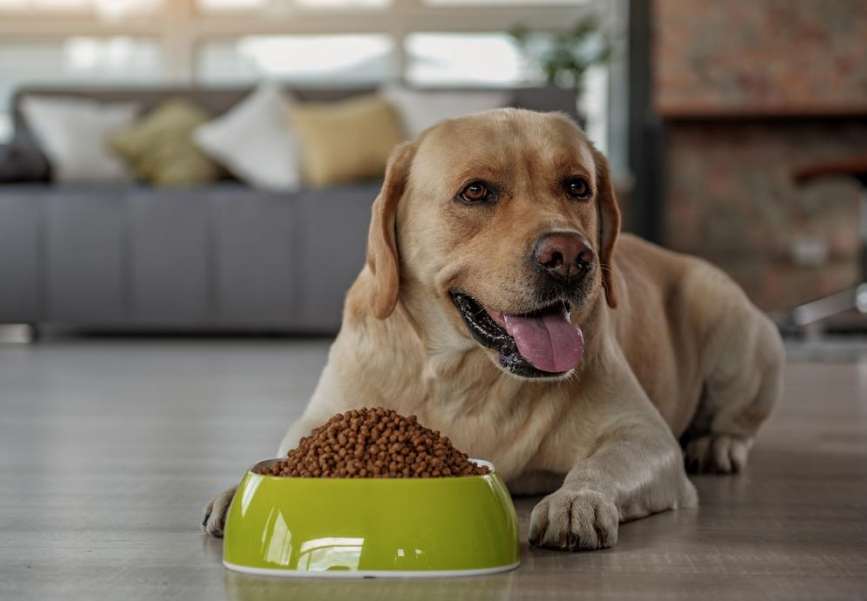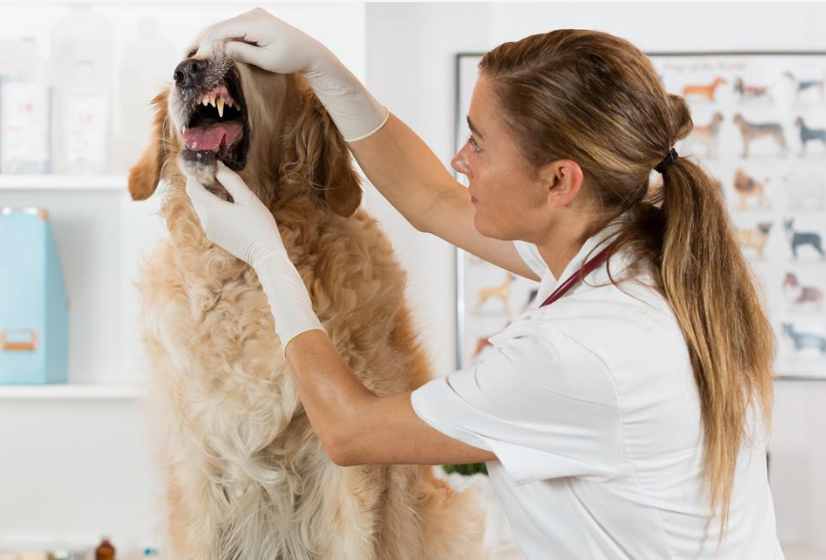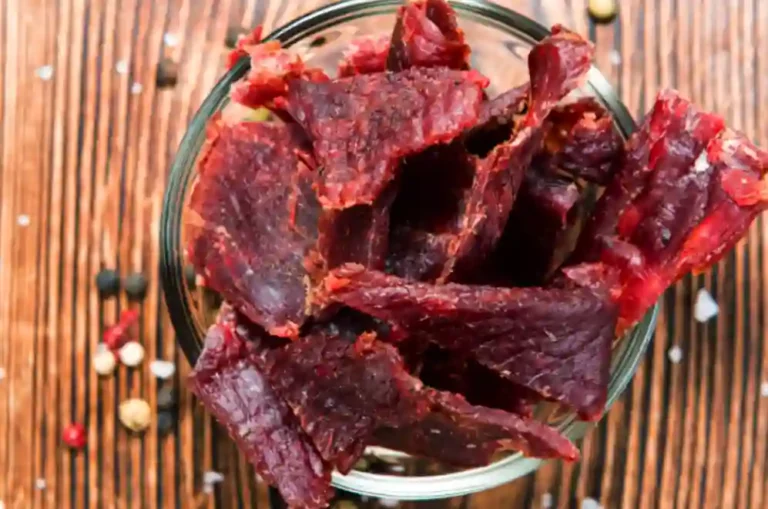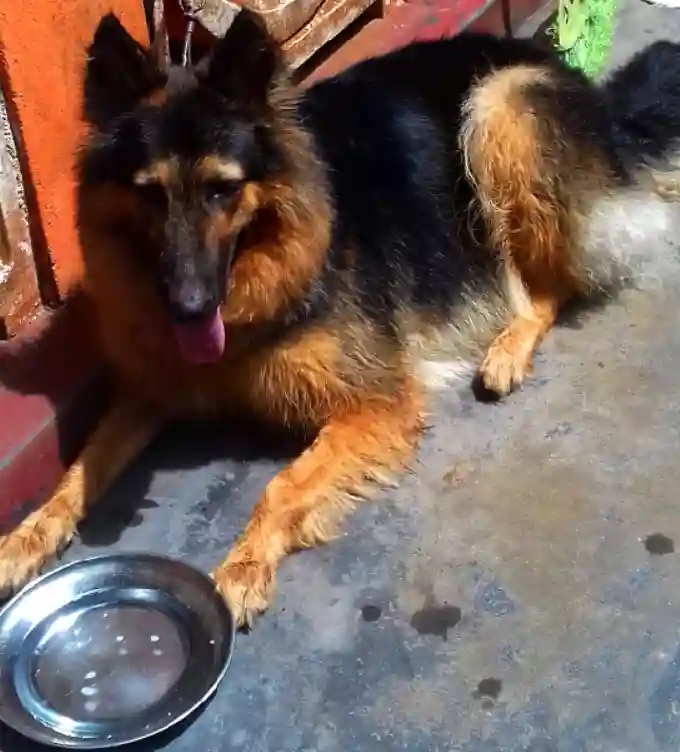The Wet vs. Dry Dog Food Debate
Wet and dry dog food varieties are two popular options when choosing the right dog food for your canine companion. But which one is better for your dog? There are pros and cons to both. An estimated 90 million dogs live in over 60 million households across the United States. With so many dogs to feed, the U.S. pet food industry rakes over $30 billion annually. Out of this, approximately $17 billion is spent specifically on dog food.
On the pro side, wet dog food typically has a higher moisture content, with 70%-80% water versus only 10% in dry kibble. This can help dogs stay hydrated. Wet food also tends to have more animal protein from meat, which is essential for muscle maintenance. Additionally, wet food’s soft texture and palatability make it easier for some dogs to chew and digest.

However, dry kibble has upsides too. It’s more affordable, with average costs of $2/pound versus $4-6/pound for wet food. The crunchy texture helps clean dogs’ teeth. Kibble can also be left out for dogs to graze on throughout the day. And some dogs just seem to prefer the taste and texture of dry food.
When looking at ingredients, wet and dry foods can have high-quality proteins, grains, veggies, etc. So, it comes down to your dog’s unique needs and preferences. For example, smaller or senior dogs may benefit more from the moisture and soft texture of wet food. Puppies need the extra protein in wet foods for growth. But highly active dogs may prefer kibble’s energy density.
The best approach is to look for high-quality recipes of both wet and dry foods and mix up feedings with some of each. This gives your dog variety while balancing out the pros and cons. Check with your vet for tailored recommendations to pick the best food for your dog.
Table of Contents
- Canned (Wet) Dog Food vs. Dry Dog Food: Which is Better?
- Palatability and digestibility differences between wet and dry dog food
- Dry and wet dog food impact dental health
- Controversy Of Grain-Free Dog Food
- Differences in shelf life between wet and dry dog food when opened
- Helpful tips for deciphering dog food labels and choosing the best diet
- Benefits of feeding dogs both wet and dry food
- Puppy food considerations – Wet or dry dog food
- Wet vs. dry food for senior dogs – Which is better for old dog
- Summary on the wet vs. dry dog food debate
Canned (Wet) Dog Food vs. Dry Dog Food: Which is Better?
In a study by veterinary nutritionists at Tufts University, overweight dogs fed canned food lost an average of 11% of starting body weight over 2 months. Dogs provided dry food only lost 5% over the same period. The increased protein and moisture in wet food appeared to aid weight loss. Regarding canned (wet) dog food vs. dry dog food, both types have pros and cons.
Here is a breakdown,
Canned (Wet) Dog Food
- Typically contains 70-80% moisture, whereas dry kibble only has 10%
- Higher protein content, with up to 90% from meat, organs, etc., vs. 25-35% protein in dry food
- It contains fewer carbohydrates than dry kibble
- Softer texture, easier to chew and digest
- More palatable than dry for many dogs
- It comes in stew, paté, and chunky varieties
- More expensive, averaging $4-6 per pound
Dry Dog Food (Kibble)
- More affordable, averaging only $2 per pound
- Convenient to free-feed throughout the day
- Dental benefits from crunchy texture and abrasion
- It contains more carbohydrates like whole grains
- Lower moisture around 10%
- Less protein than wet food, 25-35%
- It comes in varieties like extruded, baked, freeze-dried
A 2020 study from the University of Liverpool found dogs fed exclusively wet diets had far less plaque buildup and gingivitis than kibble-fed dogs. However, dry food still provided some dental benefits over no kibble at all. So, wet dog food may be better for hydration, palatability, and providing high-quality protein.
But dry kibble has perks like affordability, convenience, and dental health. Mixing both types can give dogs the optimal nutritional variety. Consider your dog’s needs and preferences when choosing!
Comparison table of the pros and cons of wet vs. dry dog food
Here is a comparison table of the pros and cons of wet vs dry dog food.
| Features | Wet/Canned Dog Food | Dry Dog Food |
| Convenience | No | Yes |
| Cost | More expensive | Less expensive |
| Meat protein content | Higher, up to 90% | Lower, 25-35% |
| Healthy fats | Higher | Lower |
| Carbohydrates | Lower | Higher |
| Preservatives | Fewer | More |
| Filling | Yes | No |
| Storage | Requires refrigeration | Easy to store |
| Hydration | Higher moisture, 70-80% | Lower moisture, 10% |
| Dental health | No | Yes |
| Shelf life once opened | 2-3 days | Weeks/months |
Wet dog food tends to be more palatable and nutritious, but dry kibble wins for convenience and affordability. Mixing both can give dogs the benefits of each for optimal nutrition and variety.
Comparison of the convenience and affordability of canned vs. dry dog food

Convenience
- Dry dog food is more convenient since it can be free-fed, meaning it is left out in a bowl for dogs to nibble throughout the day.
- Canned food needs to be refrigerated after opening and has a shorter shelf life. It should be discarded after a couple of days if uneaten.
- Kibble is easily stored in bags, bins, or containers for longer periods. Canned food takes up more fridge space.
- Dry food requires no preparation, while wet food may need a quick stir or remix.
Affordability
- Dry dog food costs significantly less per pound, averaging around $2/lb compared to $4-6/lb for canned food.
- Because kibble contains less moisture, you get more dry matter per pound.
- Buying canned food in bulk or larger cans can save some money. But per feeding, dry food is still more budget friendly.
- High-quality canned food with top ingredients can get quite pricey. Standard kibble costs less.
- Over time, canned food costs add up, while a bag of kibble lasts longer.
So, when considering convenience and affordability, dry dog food seems to have some clear advantages. But for some dogs, the added benefits of canned food may be worth the extra effort and costs. As with pet purchases, shop for deals and buy in appropriate quantities to help save.
Yes, dry dog food is more convenient and affordable than canned wet food. Dry dog food is widely available in stores, online, pet shops, and supermarkets, making it easy and convenient to purchase.
So, when weighing factors like availability, ease of use, and budget, dry dog food is the most convenient and affordable choice for dog owners. The benefits of wet food come at a clear premium cost and constraint.
Palatability and digestibility differences between wet and dry dog food
Canned wet food often has more natural, savory flavors as the ingredients are less processed. This makes it more palatable and appetizing for picky eaters.
The soft, stew-like texture makes wet food easier to chew and more palatable. Dry kibble can be too crunchy or challenging for some dogs. The high moisture content (70-80%) in canned food helps promote hydration. This makes it suitable for dogs prone to urinary issues.
However, the richness of wet food with more protein and fat can sometimes lead to digestive issues like vomiting or diarrhea in dogs with sensitive stomachs.
The high protein and fat levels also place more demands on the liver and kidneys to metabolize. So, wet food may not be ideal for dogs with organ problems. On the other hand, most dry kibble has lower fat and more fiber, which can help maintain steady digestion and consistent stool.
So, while wet food may be more palatable, dogs prone to stomach sensitivities or organ issues may do better on the more moderate protein and fat levels in dry kibble. As always, consult your vet on what food is optimal for your dog’s health.
Dry and wet dog food impact dental health
Dry & wet dog food can significantly impact a dog’s dental health. Kibble’s hard, crunchy texture helps scrape away tartar and plaque as dogs chew. This provides better dental abrasion and cleaning. A 2018 study by researchers at the University of Illinois found that dogs fed a wet diet had significantly lower blood glucose levels and greater post-meal insulin than dogs fed kibble. This suggests wet food may be beneficial for dogs with diabetes.

A dry kibble diet can help reduce bacterial buildup and prevent issues for breeds prone to dental diseases like gingivitis or periodontal disease. However, dogs with existing dental problems or tooth decay may find kibble painful to chew. Wet food is a better choice for compromised dental health.
Without kibble’s abrasive cleaning effect, dogs eating canned food require frequent teeth brushing by owners and dental checkups to maintain good oral health. Some compromised dogs may need prescription dental diets rather than simply switching to wet food. Always consult a vet for advice tailored to your dog’s needs.
Consider dental chews and treats to complement wet food diets and provide cleaning. So dry food certainly has dental advantages, but these must be weighed against other factors for each dog’s health profile and needs. Maintaining oral health is essential, regardless of diet.
Controversy Of Grain-Free Dog Food
Grain-free dog recipes have become popular in the $30 billion U.S. pet food industry, making up 43% of premium dog food sales as of 2022. The appeal lies in their mimicry of ancestral canine diets.
Wild wolves and dogs naturally eat meat, organs, and bones. So grain-free kibble swaps out cereal grains like corn, wheat, or rice for ingredients like peas, lentils, potatoes, and tapioca. This can benefit dogs with grain allergies or sensitive digestive systems.
However, in 2018, the FDA began investigating a potential link between grain-free diets and canine dilated cardiomyopathy (DCM), a heart disease-causing an enlarged, weak heart. As of August 2022, the FDA has received reports of over 1,800 dogs diagnosed with DCM believed to be related to diet. Of those, 406 dogs have died from the condition.
The exact cause remains unknown, but legumes like peas and lentils are a suspected factor. They contain less specific amino acids like taurine that support heart health. The FDA continues to research the ingredients and formulations in grain-free food that may contribute to DCM risk.
The investigation has stirred debate about the risks versus benefits of grain-free diets for dog owners. Some vets encourage continuing grain-free food for dogs not predisposed to DCM that benefit from the recipes. But switching back to grain-inclusive food may be recommended for breeds with a genetic DCM risk.
As with any diet change, consult your veterinarian about the optimal food for your dog’s unique nutritional needs and health profile. Monitor your pet closely for any potential symptoms of DCM, and be cautious with boutique, exotic grain-free diets not meeting complete nutritional standards.
Differences in shelf life between wet and dry dog food when opened
- Once opened, canned wet food only lasts 2-3 days maximum in the fridge before spoiling. It has a short shelf life.
- Any uneaten portion should be discarded after 1 hour at room temperature, as bacteria multiply quickly in the high moisture content.
- The air-tight packaging of canned food means few preservatives are needed. But once exposed, it spoils faster.
- In contrast, an opened bag of dry kibble can last for weeks or months if stored properly in a container. It keeps much longer.
- The lower moisture and use of synthetic preservatives allow dry food to remain shelf-stable when opened.
- Dry food is also easier to store long-term in bulk and requires no refrigeration. This makes it suitable for traveling.
So, while canned food may have some health benefits, its limited shelf life, once opened, is a clear drawback. Kibble offers much more flexibility for storage and minimal waste from spoilage. This is another factor owners must consider when choosing between wet or dry food for their dogs. Proper storage is essential either way.
Helpful tips for deciphering dog food labels and choosing the best diet
- Check the first 5 ingredients listed – these make up the majority of the food. Look for a named protein source, like chicken, beef, salmon, etc., in the first ingredients.
- For grain-inclusive foods, opt for whole grains like brown rice, barley, or oats rather than generic terms like “cereal.” Whole grains offer more nutrients.
- Avoid fillers like corn, wheat, and soy, which are just calorie sources without nutritional value.
- Look for specific ingredients like “Chicken and Brown Rice” in the name rather than vague terms like “Dinner.” Specifics indicate those are the central 95% of ingredients.
- Shun artificial preservatives like BHA, BHT, or ethoxyquin can be harmful for a long time.
- Lower fat, around 10-15%, and moderate carbs, 30-40%, promote healthy weight. Higher fat/carbs can lead to obesity.
- Verify the food meets AAFCO standards for “complete and balanced” nutrition as determined by the NRC. This confirms adequate nutrition.
- For active, high-energy dogs, ensure the food has enough protein 25-35% and fat 20%+ to meet their needs.
Reading dog food labels closely and knowing what to look for can help you select the healthiest diet for your pet’s lifestyle and needs. Consult your vet if unsure!
Benefits of feeding dogs both wet and dry food
Mixing wet and dry allows you to take advantage of the convenience and affordability of kibble and the palatability and hydration of canned food. This balanced approach allows dogs to stimulate appetite while providing complete nutrition. However, keeping the wet-to-dry food ratio consistent at each meal is essential.

- Sudden diet changes can lead to digestive upset in dogs, so gradual transitions are recommended.
- Work with your vet to determine the right combination and ratios for your dog’s needs. For example, more wet food for a picky eater is more dry for dental health.
- Feeding some canned food can make dry kibble more enticing for fussy eaters. But kibble should still make up the majority of dental benefits.
- Above all, consistency with any diet plan is key for your dog’s gastrointestinal health and continued appetite.
Researchers at Purdue University found wet dog food had 3-4 times higher concentrations of essential fatty acids like DHA and EPA compared to various kibble diets. These fatty acids support skin, coat, brain, and immune health.
So a mixed wet and dry diet can be beneficial, but introduce new foods slowly and stick to a regular meal schedule and ratio. Consult your vet to tailor the diet combo to your dog.
How to mix wet and dry dog food
You can mix wet and dry in the same bowl at mealtime for a mixed texture. Or you could feed wet in the morning and dry at night to split up the benefits. Some use canned food as a topper over kibble to encourage eating.
You can also use kibble as training treats throughout the day while feeding primarily wet food meals. No matter how you mix them, be mindful of calorie counts. Don’t over or under-feed.
- It’s best not to mix brands or formulas. Stick to one wet and one dry for nutritional consistency.
- For dogs on prescription diets, do not mix with other foods as it will impact the nutrient balance.
- Mix old and new gradually over 7-10 days to avoid GI upset when transitioning foods.
The key is finding a wet/dry combo and schedule that suits your dog’s preferences and health needs. But be cautious about mixing brands or straying from veterinary recommendations. Consistency is key!
Puppy food considerations – Wet or dry dog food
Puppies need about twice the protein and fat of adult dogs – generally at least 22% protein and 8% fat. Their growing bodies require more energy. The higher protein content in wet foods, often up to 90% from meat, can help meet puppies’ needs. But high-quality dry puppy kibble with proper protein and fat levels works, too. Look for small, easy-to-chew pieces.

- Dry kibble can provide mental stimulation through puzzle feeders. This entertains puppies while the owner is away.
- Buy kibble specific for large breed puppies if you have a giant dog, as calcium levels differ.
- Wet food provides quick energy for toys, and small breeds at risk of hypoglycemia.
- Mixing wet and dry can give puppies the best nutritional worlds.
Whatever food type you choose, ensure it’s specifically formulated for puppies with the proper nutrient levels. Check with your veterinarian if unsure.
Wet vs. dry food for senior dogs – Which is better for old dog
Many senior dogs develop dental issues like “lost teeth, misaligned jaws, or gum disease,” making hard kibble difficult and painful to chew. Canned or wet food with a soft, tender texture is easier for seniors with chewing problems to eat and digest.
The increased moisture in wet food also helps maintain hydration, which is essential for aging dogs. Since seniors can lose some sense of smell, the richer aroma of canned food helps stimulate their appetite. However, dry food still provides dental cleaning benefits seniors need to reduce bacteria and tartar buildup.
- Some compromise by feeding primarily wet food, with occasional kibble meals or dental chews for cleaning.
- Check with your vet, as conditions like kidney disease or heart failure may indicate specialized senior dog diets.
- Ultimately, finding foods your senior enjoys that meet their changing nutritional needs is key – whether wet, dry, or a mix.
Monitor your senior dog closely and be prepared to adjust its diet as its health needs change. Their comfort and nutrition are most important.
Summary on the wet vs. dry dog food debate
Here are the key takeaways.
- There are good arguments for both wet and dry dog food types. The ideal food depends on the individual dog and their needs.
- Let your dog’s preferences guide you, as they know what textures and flavors they enjoy most. Their appetite matters.
- Using a combination of wet and dry is a great option to get a balance of benefits. Wet food can add flavor and moisture to kibble.
- Always consult your veterinarian before significantly changing your dog’s diet or introducing new foods. Get advice tailored to your dog’s health profile.
- When you choose or mix dog foods, you must consider your dog’s age, activity level, digestive health, dental needs, and existing conditions.
- Work with your vet to determine the right nutrition plan and ideal food type(s) for your furry friend. Monitor for any issues.
- With many quality options for wet and dry foods today, you can likely find great choices to meet your dog’s needs and preferences.


![What Should I Do If My Dog Drank Chocolate Milk? [Veterinarian Tips] 7 What Should I Do If My Dog Drank Chocolate Milk? [Veterinarian Tips]](https://www.puppiesdiary.com/wp-content/uploads/2023/01/What-Should-I-Do-If-My-Dog-Drank-Chocolate-Milk.webp)
![Can Dogs Eat Veggie Straws? [3 tips] 8 Can Dogs Eat Veggie Straws? [3 tips]](https://www.puppiesdiary.com/wp-content/uploads/2023/04/Can-Dogs-Eat-Veggie-Straws-768x515.webp)


